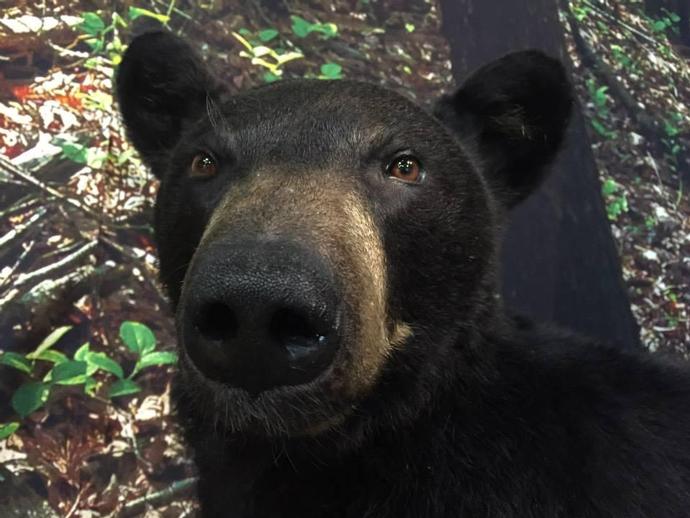September 3, 2015
During the 17th century, explorers from England, Spain, France, and Portugal sought to explore the "New World", now known as the Americas. "Glory, God, and gold" drove men of religion, men of business, and men with ambition to map new lands, learn about natural resources, and make contact with native peoples. Today, archaeologists study the past by excavating sites and interpreting the things that people have left behind. Through this study, society continuously gains greater knowledge and insight into our past. Stories forgotten are remembered and new clues change the way we view years past.
On Saturday, September 5, the Virginia Museum of Natural History will publicly unveil its latest special exhibit, "Exploring Virginia", which navigates the history of Virginia through the context of archaeology and explains it through a narrative seldom told. The exhibit is open through August 3, 2016.
"Archaeology allows us to interact directly with the material culture of the past," said Dr. Elizabeth Moore, curator of archaeology at the Virginia Museum of Natural History. "Written documents often reflect an agenda that provides only one perspective. Excavating and interpreting the things that people leave behind can give us a more objective view. This exhibit allows people to see a wide variety of objects from the past, both original and replicas, that represent a variety of viewpoints and stories, whether those are stories of the English explorers, the Native Americans they encountered, or the enslaved people brought to the colonies."
Not only does the exhibit take a more scientific approach to telling the history of what we now refer to as Virginia, it tells the story through narratives many people have never heard.
"This exhibit discusses several English explorers with whom our visitors might not be familiar," said Moore. "Many Virginians know of John Smith, but do they know about Bartholomew Gosnold, John Lederer, or Batts and Fallam? Those men provided important pieces of information about the land and the people the colonists were encountering. Before John Lederer traveled to the peaks of the Blue Ridge, most colonial leaders thought that a sea to Asia was on the other side of the mountains. Imagine their surprise when they learned that beyond the Blue Ridge were even more mountains and more land than they could have imagined. We know this history from the journals these men kept and the maps that were produced after their return. We can learn even more about the past by examining the archaeological record. In this exhibit, we show the public some of the 400-year old objects that these men would have carried with them, some of the animals they would have seen in their travels, and some of the Native American material culture that they would have observed. Virginia Indians were critical to the success of these explorations; they were guides through the landscape, interpreters with other tribes, and teachers about the plants and animals that were safe to eat and were good for furs and hides."
The museum hopes "Exploring Virginia" is able to challenge visitors' understanding of Virginia's cultural and social past by presenting Virginia's history in a unique manner. The exhibit's narrative is brought to life with a large variety of artifacts discovered during archaeological excavations, as well as specimens that range from modern to thousands of years ago.
"In addition to having many important and fragile objects that are protected in exhibit cases, this exhibit contains touchable original objects and a large number of replicas from many sites around the state and beyond," said Moore. "We hope that by having replicas and real objects that our visitors can touch and handle, they will experience a more direct connection to the stories that these objects represent. We have also incorporated several interactive areas where visitors can try their hand at identifying different types of artifacts, so they can experience some of the challenges that we face when identifying and interpreting objects from the past."
"Exploring Virginia" also marks the museum's first large-scale exhibit to integrate some of the specimens from The Gregory Speck Collection, a collection of nearly 400 wildlife taxidermy mounts that was donated to the museum by Gregory Speck, who previously hosted the collection in his former Upper Manhattan apartment, as well as in his Harrisonburg, Virginia home.
The exhibit also features artifacts and specimens loaned or donated by multiple individuals and organizations, including Tom and Marty Fleenor, T. Marshall Hahn, Jr. and family, Mervyn and Virginia King, Andria Christian and Lisa Layne, from the Estate of Jerry L. Pendleton, John Perry, Gregory Speck, Kathy Shelton and Gary Stultz in memory of Jesse Carlton Stultz, Paul Turman in honor of David and Linda Turman, and the Virginia Department of Transportation.
Many people and organizations contributed to the content of this exhibit, including: Dr. Bernard Means, VMNH Research Associate and Director of the VCU Virtual Curation Laboratory, The Virginia Historical Society, The Virginia Department of Historic Resources, Jamestown Rediscovery at Historic Jamestowne, The Library of Virginia, Solid Stone Fabrics, BU Today and Boston University, Simone Morris, Brenna Geraghty, Rebecca Moore, Griffin Haley, Soroush Zargarani, Rebecca Guest, Hannah Lickey, Brenna Geraghty, Lucy Treado, Chelsea Miller, Erica Eddins, Athena Beskenis, Zoe Rahsman, Rebecca Bowman, Jesse Wallace, Natasha Cote, students in the VCU Virtual Curation Laboratory, Jessica Hubbard, Eddie Bowman and Lowell Nugent.
"Exploring Virginia" is sponsored by Memorial Hospital of Martinsville and Henry County and Bassett Furniture.
Admission to the exhibit is included in the price of general museum admission. General museum admission is $5 per adult, $4 for ages 3 to 18 and, $3 for seniors ages 60+, and free for children under 3 and museum members.
For more information about the Virginia Museum of Natural History, visit www.vmnh.net.

 Hours & Admissions
Hours & Admissions Directions
Directions

